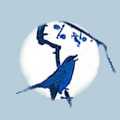Between 2012 and 2014 we posted a number of articles on contemporary affairs without giving them volume and issue numbers or dates. Often the date can be determined from internal evidence in the article, but sometimes not. We have decided retrospectively to list all of them as Volume 10, Issue 54 with a date of 2012 with the understanding that all were published between 2012 and 2014.
子どもらを守らねばならない−−福島の生徒達の放射線基準
By APJ Editors
Despite the fact that Japan has in the past set the maximum radiation exposure for citizens at 1 millisievert, the government has now increased that amount to 20 millisieverts for Fukushima school children. Defending this twentyfold increase, the Japanese Ministry of Education, Culture, Sports, Science and Technology argues that 20 millisieverts is still within the recommended range of 1-20 millisieverts set by the International Commission on Radiological Protection for exposure in emergency situations. Others question the wisdom of using maximum guidelines for children in areas that may be impacted for years to come. A petition has been launched to urge the Japanese government to repeal this decision as experts write about the potential risks.
Tilman Ruff, chair of the International Campaign to Abolish Nuclear Weapons and associate professor at the Nossal Institute for Global Health at the University of Melbourne, writing in English for Japan’s Kyodo news service, outlines the risk to Fukushima’s children.
OPINION: Children of Fukushima need our protection
By Tilman Ruff
MELBOURNE, April 26, Kyodo
I was dismayed to learn that the Ministry of Education, Culture, Sports, Science and Technology earlier this week increased the allowable dose of ionizing radiation for children in Fukushima Prefecture.
The dose they set, 3.8 microsieverts per hour, equates to more than 33 millisieverts (mSv) over a year. This is to apply to children in kindergartens, nursery, primary and junior high schools. Let me try to put this in perspective.
Widely accepted science tells us that the health risk from radiation is proportional to the dose — the bigger the dose the greater the risk, and there is no level without risk.
The International Commission on Radiological Protection recommends that all radiation exposure be kept as low as achievable, and for the public, on top of background radiation and any medical procedures, should not exceed 1 mSv per year.
For nuclear industry workers, they recommend a maximum permissible annual dose of 20 mSv averaged over five years, with no more than 50 mSv in any one year.
In Japan the maximum allowed annual dose for workers, 100 mSv, was already higher than international standards. This has been increased in response to the Fukushima disaster to 250 mSv.
The U.S. National Academy of Sciences BEIR VII report estimates that each 1 mSv of radiation is associated with an increased risk of solid cancer (cancers other than leukemia) of about 1 in 10,000; an increased risk of leukemia of about 1 in 100,000; and a 1 in 17,500 increased risk of dying from cancer.
But a critical factor is that not everyone faces the same level of risk. For infants (under 1 year of age) the radiation-related cancer risk is 3 to 4 times higher than for adults; and female infants are twice as susceptible as male infants. Females’ overall risk of cancer related to radiation exposure is 40 percent greater than for males. Fetuses in the womb are the most radiation-sensitive of all.
The pioneering Oxford Survey of Childhood Cancer found that X-rays of mothers, involving doses to the fetus of 10-20 mSv, resulted in a 40 percent increase in the cancer rate among children up to age 15.
In Germany, a recent study of 25 years of the national childhood cancer register showed that even the normal operation of nuclear power plants is associated with a more than doubling of the risk of leukemia for children under 5 years old living within 5 kilometers of a nuclear plant.
Increased risk was seen to more than 50 km away. This was much higher than expected, and highlights the particular vulnerability to radiation of children in and outside the womb.
In addition to exposure measured by typical external radiation counters, the children of Fukushima will also receive internal radiation from particles inhaled and lodged in their lungs, and taken in through contaminated food and water.
A number of radioactive substances are concentrated up the food chain and in people. As a parent, as a physician, the decision to allow the children of Fukushima to be exposed to such injurious levels of radiation is an unacceptable abrogation of the responsibility of care and custodianship for our children and future generations.
==Kyodo
福島の子どもたちを守らねばならない
ティルマン・ラフ メルボルン
4/26 共同
今週初め、私は文部科学省が福島の子どもの電離放射線の許容線量を引き上げたと知り、私は大変な不安に襲われた。
かれらが定めた毎時3.8マイクロシーベルトという値は、一年分にして33ミリシーベルト(mSv)以上に相当する。それが幼稚園児、保育園児、小学生、中学生に対し適用されるのである。このことについて正確に考えてみたい.(訳注参照)
放射線が健康にもたらす危険は線量に比例する、というのが一般的な科学的見地である-線量が高ければ高いほどリスクは大きく、リスクが発生しないレベルなど存在しない。
すべての放射線被曝はできるかぎり低く抑えられるべきであり、一般人については自然放射線と医療措置によるものを含めても年間1mSvを超過すべきではない、と国際放射線防護委員会(ICRP)は勧告している。また原子力産業で働く労働者については5年間の平均線量として年間最大20mSvまでとし、かつ年間50mSvを超える年があってはならない、と。
すでに国際基準より高かった日本の労働者の最大許容線量100mSvは、福島の大事故を受けて250mSvまで引き上げられた。 米国国立科学アカデミーBEIR VII報告書によれば、1mSvの放射線(被曝)は固形癌(白血病以外の癌)については約1万人に1人、白血病では約10万人に1人、癌による死亡では17500人に1人のリスク上昇をもたらすものとみられる。
だがもっとも見落としてならない点は、全ての人間が同じレベルのリスクに晒されるわけではないということだ。放射線による癌のリスクは幼児(一歳未満)の場合、成人の3-4倍になる。また、女の幼児は男の幼児に比べ、2倍感受性が強い。
女性全体の放射線被曝による癌のリスクは、男性に比べ4割高い。また放射線に対して誰よりも敏感なのは、母親の子宮にいる胎児である。
母親がX線検査を受けると胎児は10~20mSvの線量を被曝する。これにより15歳までの子どものあいだの癌の発症率が四割上昇していることが、この分野では先駆的な「オックスフォード小児癌サーベイ」の調査で判明した。
ドイツで最近行われた全国の小児癌登録データ25年分の研究では、通常運転時であっても、原発はそこから5キロ圏内に暮らす5歳以下の子どもの白血病のリスクを2倍以上上昇させていることが明らかになった。
50km以上離れた場所でも、リスク上昇がみられた。これは予想をはるかに上回っており、子宮の中ないし外にいる子どもが放射線に対して特にぜい弱であることを強く示している。
よくある外的な放射線計測器で測られる被曝だけでなく、粒子を呼吸によって肺に吸い込んだり、汚染された食物や水を通して取り込んだりすることで、福島の子どもたちは内部被曝をすることになる。人々の体内には食物連鎖を通して多量の放射性物質が濃縮されるのだ。
一人の親、そして医師として言う。福島の子どもたちがそのように有害なレベルの放射線被曝をすることを許容することは、我々の子どもたちや未来の世代にたいする保護・管理責任の許されざる放棄である。
(ティルマン・ラフ 核兵器廃絶国際キャンペーン代表 オーストラリア・メルボルン大学ノッサル国際医療研究所準教授)
==共同
訳者 田中泉
訳注:国は、一般人の年間被曝は1ミリシーベルト(1000マイクロシーベルト)としてきたが、今回の事故が起こり、大人どころか子どもの年間被ばく量の許容範囲を20倍の20ミリシーベルトに引き上げた。文科省は校庭活動などの屋外活動を一日8時間、残りの16時間は屋内で過ごすと想定し、毎日8時間3.8マイクロシーベルト、16時間1.52マイクロシーベルト浴びたとして、年間20ミリシーベルト(20,000マイクロシーベルト)になるという計算の上で校庭活動等の限度を毎時3.8マイクロシーベルトと定めている。この計算過程は報道ではっきり示されなかったこともあり、ティルマン・ラフ氏はそのまま毎時3.8を24と365でかけて、年間33ミリシーベルトと算出しているようだ。これは誤りではあるが、年間20ミリシーベルトだろうが33ミリシーベルトだろうがこの記事におけるラフ氏の論点や結論には影響を及ぼさない。(参考:『福島県内の学校等の校舎・校庭等の利用判断における暫定的考え方について』文科省ホームページhttp://www.mext.go.jp/b_menu/houdou/23/04/1305174.htm)





